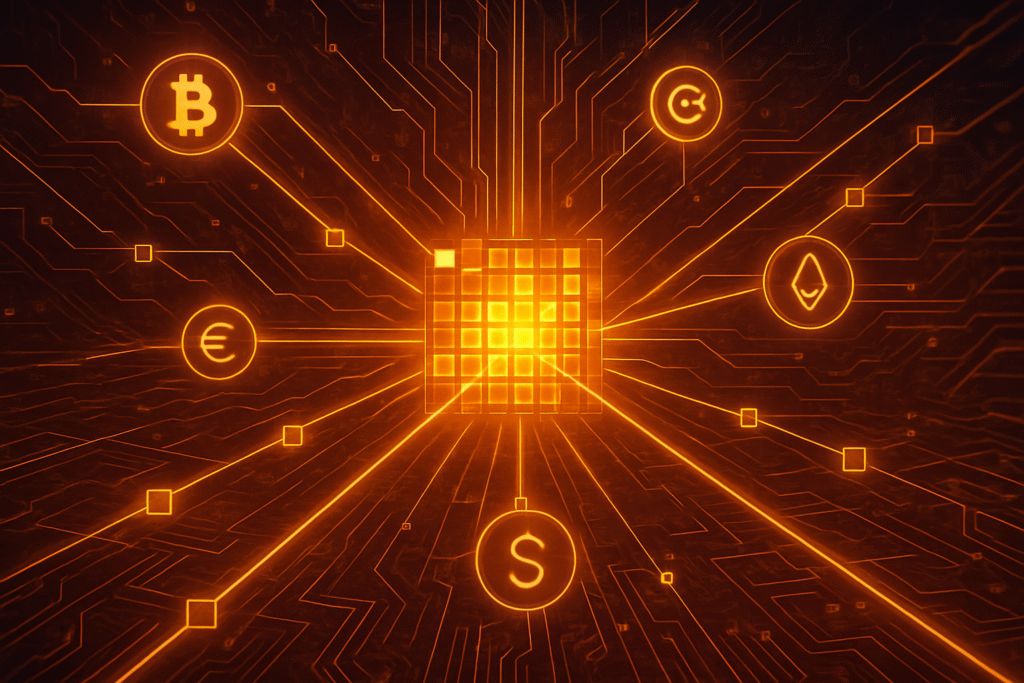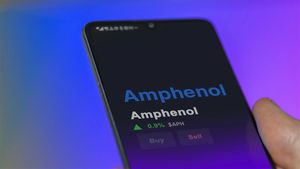
MUMBAI, INDIA – October 8, 2025 – In a monumental stride for blockchain scalability and mainstream adoption, the Polygon (MATIC) PoS Network officially deployed its highly anticipated 'Rio' upgrade to the mainnet today, October 8, 2025, at approximately 2:12 p.m. UTC. This architectural overhaul, a cornerstone of Polygon's ambitious "GigaGas" roadmap, promises to dramatically enhance the network's throughput, efficiency, and reliability, signaling a new era for decentralized applications and digital finance.
The immediate market reaction has been keenly watched, with analysts anticipating a positive long-term sentiment boost for Polygon's native token, MATIC, as the network positions itself as a prime candidate for global payments and real-world asset (RWA) tokenization. The upgrade's core technical advancements, including a significantly increased block gas limit, a refined block production model, and stateless verification, are set to tackle some of the most persistent bottlenecks hindering widespread crypto adoption, making the network more accessible and performant for both developers and end-users. This pivotal development is not just an incremental improvement; it represents a fundamental shift in Polygon's infrastructure, designed to unlock unprecedented levels of transaction speed and finality, thereby solidifying its role as a critical layer in the evolving crypto ecosystem.
Market Impact and Price Action
While the 'Rio' upgrade's mainnet launch occurred just hours ago, the crypto market has been buzzing with anticipation. Leading up to the deployment, Polygon's native token, MATIC, experienced a period of cautious optimism. As of early trading on October 8, 2025, MATIC saw a modest uptick, reflecting investor confidence in the upgrade's potential to drive network utility and demand. The price movements indicate a speculative accumulation phase, with traders positioning themselves for the long-term benefits of enhanced network performance.
Trading volumes for MATIC have shown a noticeable increase in the hours following the mainnet activation, suggesting heightened interest from both retail and institutional investors. Liquidity across major exchanges like Binance (BNB) and Coinbase (COIN) remains robust, facilitating smooth price discovery. Technical analysts are now eyeing key resistance levels, with the expectation that sustained positive sentiment and demonstrable improvements in network metrics could propel MATIC past its recent consolidation range. Support levels are holding firm, indicating a strong foundational belief in Polygon's future trajectory.
Comparing this to similar past network upgrades in the broader crypto space, such as Ethereum's (ETH) "Merge," significant architectural changes often lead to initial volatility followed by a more stable, upward trend as the benefits materialize. The 'Rio' upgrade, by directly addressing scalability and efficiency—two critical factors for mass adoption—is poised to attract new projects and users, potentially driving a more sustained appreciation for MATIC in the coming months, provided the technical implementation proceeds smoothly and without unforeseen issues.
Community and Ecosystem Response
The crypto community's response to the 'Rio' upgrade has been overwhelmingly positive, with social media platforms like X (formerly Twitter) and Reddit abuzz with discussions. Hashtags related to Polygon and 'Rio' are trending, as users and developers celebrate the network's enhanced capabilities. Many are highlighting the immediate implications for transaction speeds and costs, which are crucial for improving the daily user experience on the blockchain.
Crypto influencers and thought leaders have largely echoed this sentiment, emphasizing the strategic importance of the upgrade for Polygon's competitive positioning. Many see 'Rio' as a necessary evolution, particularly in the race to become the go-to platform for enterprise-grade Web3 applications and large-scale decentralized finance (DeFi) protocols. The elimination of chain reorganizations, in particular, has been lauded as a significant step towards a more reliable and predictable blockchain environment, fostering greater trust among developers and end-users.
The effects on related DeFi protocols, NFT projects, and Web3 applications built on Polygon PoS are expected to be substantial. Developers are anticipating a more stable and efficient foundation, allowing for the creation of more complex and high-throughput applications. This could lead to a resurgence in activity across Polygon's ecosystem, attracting new projects and increasing the utility of existing ones. Broader crypto Twitter and Reddit sentiment reflects a growing excitement for Polygon's potential to onboard the next wave of mainstream users into the Web3 space, leveraging its improved infrastructure for a seamless and cost-effective experience.
What's Next for Crypto
The successful deployment of Polygon's 'Rio' upgrade has significant short and long-term implications for the entire crypto market. In the short term, it solidifies Polygon PoS as a leading contender in the race for scalable blockchain solutions, potentially drawing more liquidity and development talent away from less efficient networks. This could ignite further innovation within the Polygon ecosystem, leading to a proliferation of new DeFi, NFT, and gaming projects that can leverage the enhanced throughput and stability.
Looking further ahead, 'Rio' is a foundational step in Polygon's strategic pivot towards becoming a universal layer for global payments and tokenized Real-World Assets (RWAs). The ability to handle approximately 5,000 transactions per second (TPS) post-upgrade, with a long-term vision exceeding 10,000 TPS, positions Polygon to significantly disrupt traditional finance. Faster stablecoin payments can transform cross-border transactions for Small and Medium-sized Enterprises (SMEs), shrinking settlement times from days to near real-time and improving operational efficiency.
Potential catalysts to watch include the successful integration of these new capabilities by major enterprise partners, further adoption of Polygon for RWA tokenization, and a sustained increase in daily active users and transaction volume. Strategic considerations for projects and investors involve evaluating the long-term viability of building on Polygon, given its improved infrastructure, and assessing the competitive landscape as other Layer 1 and Layer 2 solutions continue to innovate. While the Validator-Elected Block Producer (VEBloP) model has sparked some debate regarding potential centralization, Polygon's commitment to further decentralization initiatives will be a key area of scrutiny.
Bottom Line
The 'Rio' upgrade marks a critical inflection point for the Polygon PoS Network, delivering substantial technical advancements that directly address the core challenges of blockchain scalability and user experience. For crypto investors and enthusiasts, the key takeaway is the profound impact on Polygon's utility and competitive edge. The increased block gas limit, the efficient VEBloP model, and stateless verification collectively promise a faster, cheaper, and more reliable network. This enhanced performance is crucial for attracting the next billion users to Web3 and making decentralized applications truly viable for mainstream adoption.
The long-term significance of 'Rio' cannot be overstated. By laying the groundwork for a network capable of handling global payment volumes and supporting the burgeoning RWA market, Polygon is positioning itself at the forefront of the financial revolution. The elimination of chain reorganizations enhances predictability and finality, building crucial confidence among users and developers alike. While the debate around potential centralization within the VEBloP model will require continued monitoring, Polygon's trajectory suggests a strong commitment to balancing efficiency with decentralization.
Ultimately, 'Rio' means a more robust, scalable, and user-friendly Polygon, which is a powerful catalyst for crypto adoption. Investors should monitor key metrics such as daily active users, total value locked (TVL) in Polygon DeFi protocols, and the number of new projects deploying on the network. The coming months will be crucial for observing how these technical upgrades translate into real-world utility and market share.
This article is for informational purposes only and does not constitute financial or investment advice. Cryptocurrency investments carry significant risk.





